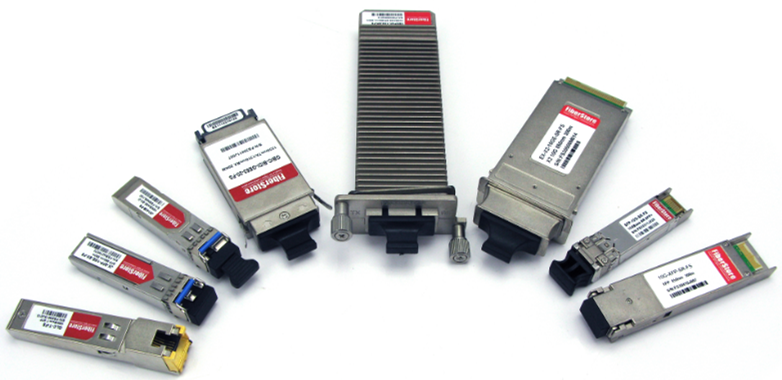Fiber optic transceiver is an indispensable component for fiber optical transmission. With the popularization of Ethernet networks, there is an increasing demand for transceiver modules in the market. However, when it comes to transceiver selection, you may be confused about whether you have chosen the matching transceiver. Don’t worry, this article will introduce some essential issues for you to consider before buying the product.
According to the length of transmission distance, transceivers are varied for either long range or short range. This leads to a decision between single-mode or multimode transceiver. Single-mode transceiver is used for long reach transmission and multimode transceiver for short reach. Typically, if the reach is under 1 km, multimode transceiver is more suitable for the application. And for longer distance, single-mode transceiver is the better choice.
Data Rate
In telecommunication, data signaling rate, also known as gross bit rate, is the aggregate rate at which data pass a point in the transmission path of a data transmission system. It is clear to see the transmission speed through data rate. Commonly used data rates are 100 Mbps, 1 Gbps, 10 Gbps, 40 Gbps and 100 Gbps. The choices for optical transceivers can range from the small form-factor pluggable (SFP) module at 1 Gbps up to the CFP transceiver at 100 Gbps.
Transmission Media
There are two types of transmission media for data communication. One is the copper and the other is optic fiber. Transceivers can used on different media due to different requirements. For instance, in the Gigabit Ethernet, 1000BASE-T SFP can operate on standard Category 5 copper wiring. And 1000BASE-LX can operate on single-mode or multimode fiber.
Compatibility
Although transceivers are designed by a multi-vendor consortium with open specifications, it is usually preferable to match your SFP to your switch vendor. Therefore, compatible transceivers are created to support products from different brands. Make sure you pick up the right transceiver that can link to your device, otherwise the transmission may be failed. By the way, you can buy these compatible transceivers from third party dealers with a relatively lower price. For example, FS.COM might be a good online shopping website where you can buy cost-effective compatible transceivers.
Cost
The cost limit will definitely affect the quality of transceiver you purchase. Typically, single-mode transceiver costs higher than the multimode. And transceivers with higher data rate cost much more than the low speed transceivers. Also, using fibers is more expensive than using coppers. But if your device doesn’t require much about the performance of transceivers, choosing a low-cost transceiver can save you a few bucks.
Conclusion
By considering different specifications of transceivers, such as distance, data rate, media, compatibility, cost, etc., choosing a suitable transceiver is really not an easy task. All the aspects much be properly evaluated to specify the right one for your project. But after your careful selection, I’m sure you will be satisfied with your transceiver.
The article originates from http://www.sfp-transceiver-modules.com/wiki/a/107/Things-You-Should-Know-Before-Transceiver-Selection.

没有评论:
发表评论